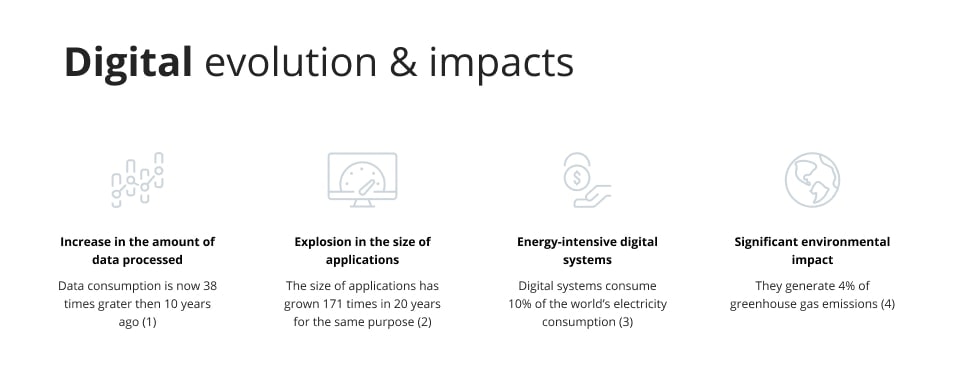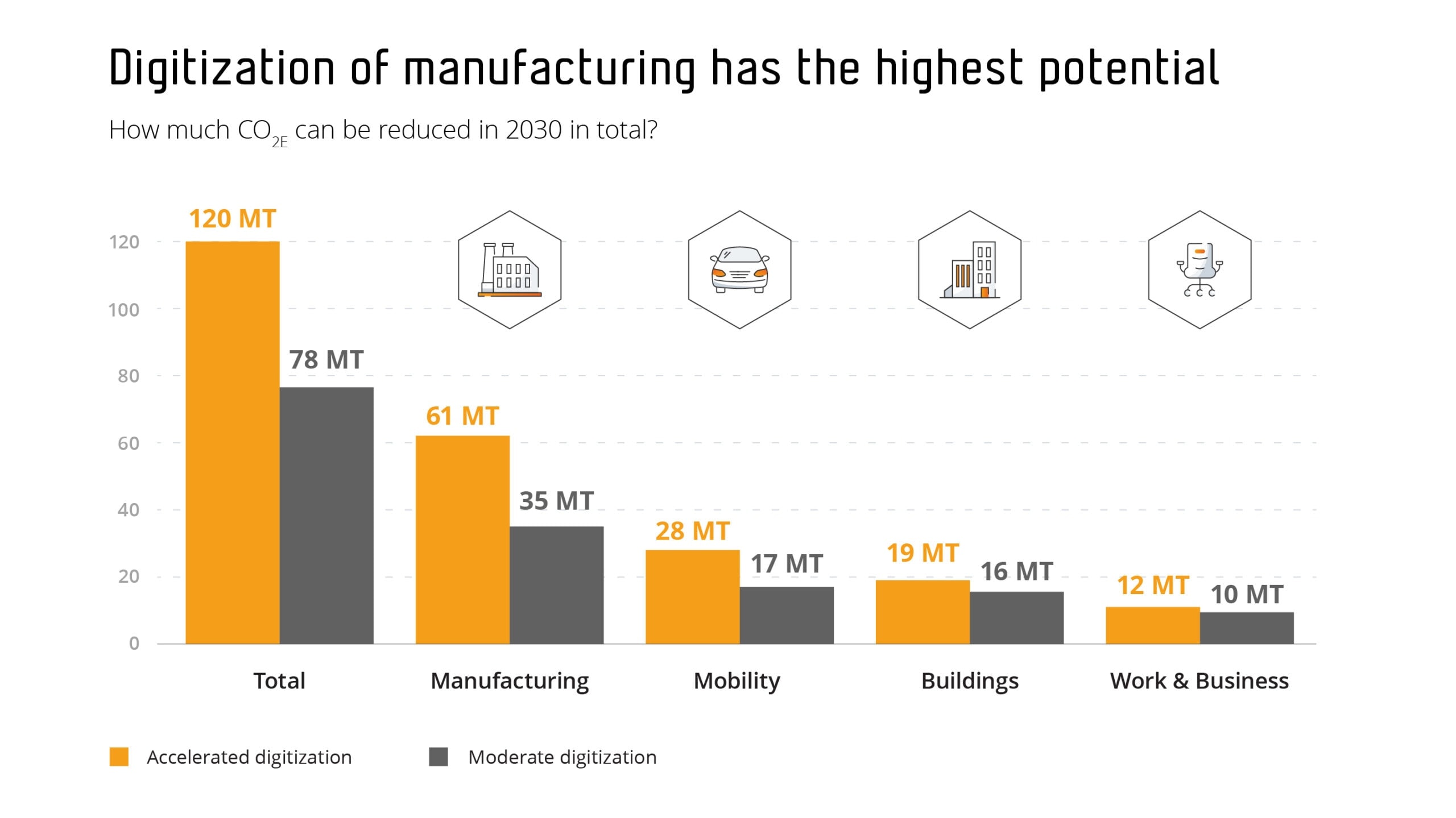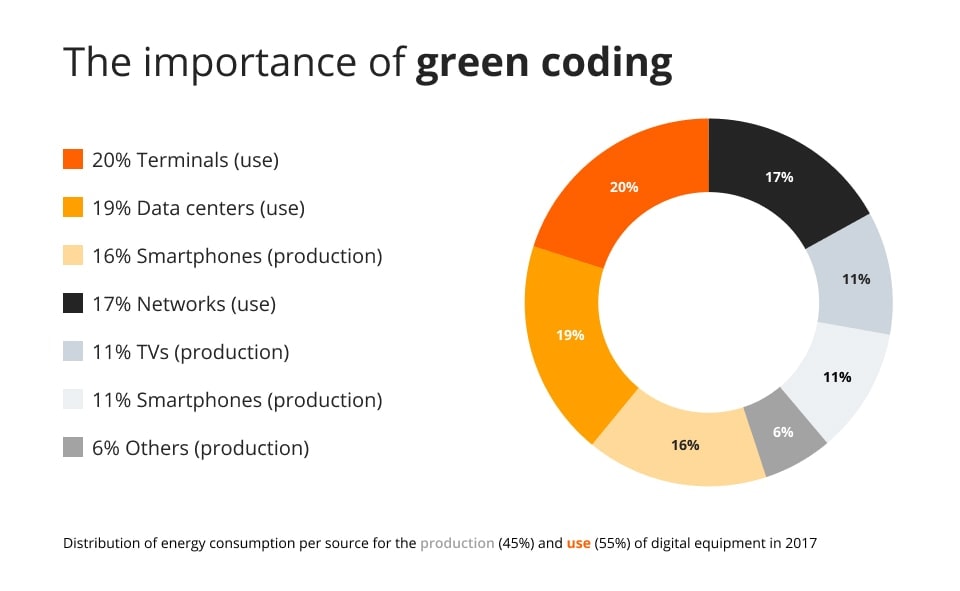
What is green coding? A contribution to save the environment
Green coding goes hand-in-hand with existing coding practices and should not be seen as 'separate'. It should be considered an integral practice that can be combined with traditional coding methodologies to create software that requires less energy consumption.
What is green coding (sustainability programming)?
Green coding is an important development in the tech world that has gained traction over recent years. It refers to programming sustainable code written with the specific purpose of minimising the energy consumption of software developed. Less energy consumption means less waste, minimising harmful effects and benefiting our environment.

A research paper titled ‘How Green Are Java Best Coding Practices?‘ found there to be two main considerations to understanding green coding and how best to implement it – structural and behavioural.
Structural considerations pertain to energy measures that need to be taken into account with regard to code blocks (also referred to as units of code).
Behavioural considerations relate to how energy consumption varies depending on which user scenarios are being run at that particular time. For example, sending an email or checking social media.
It can be tricky to highlight particular examples of green coding as their use is subtle and tends to have low footprints.
However, in order to increase an application’s performance through reducing energy consumption, programmers often use a tool called Big O Notation. This tool helps them calculate the efficiency of their coding algorithms, making them more ‘green’.
Why Green Coding matters: its impact on sustainability
In 2018 alone, online video streaming resulted in the same amount of harmful greenhouse gas emissions as the country of Spain. Data centres use vast quantities of energy just to stay afloat. According to IEA, in 2020 alone, they drew between 260-340 TWh, which equates to approximately 1.1%-1.4 of the total global electricity use. With 7.2 million data centres worldwide, it should come as no surprise that the tech industry is now focusing on more ways to become green as part of its digital transformation strategy.
At this time of increased digital interactions (thanks to the pandemic), we must search for greener, more energy-efficient solutions to our energy consumption habits.
Tech and software development companies have an important role to play in this move to a sustainable future, not least to reduce their impact on the environment.
Germany has been a pioneer in the field of green tech in recent years, with its 2030 plan to reduce emissions by 65% and its 2050 plan to be entirely carbon neutral. Other countries and organisations are following suit, with big players such as AWS pledging to run 100% of their operations with renewable energy by 2025.

The benefits of green coding

Today, businesses face considerable challenges, of which we can mention the excessive use of energy, global warming or the increasing awareness of customers’ purchasing decisions.
Green computing is an essential method of developing sustainable software development and practices, which in turn reduce a company’s carbon emissions. Fewer emissions mean lessening any negative, harmful environmental impact that the software may have.
By refining systems with eco-designed alternatives, we can save huge amounts of unnecessary energy wastage, perhaps as high as 30%. There are many advantages of green coding.
Have a look at some common benefits below.
Reduced energy consumption
Optimising software to use less energy is the fundamental goal of green coding. Given the growing global usage of data centres and their substantial electricity consumption, this is especially crucial as the digital world develops. When software is designed to use less processing power, it can run using less energy and this helps to reduce technology’s negative impact on the environment.
Lower operating costs and enhanced performance
In the realm of green coding, the principle of “using less and spending less” makes perfect sense. It’s crucial to minimise the power consumption of software to better manage operational costs amidst fluctuating and often high energy prices.
This approach, which is central to energy efficiency in software development, provides significant benefits for businesses. By optimising code to consume less power, companies can reduce their energy bills while also improving the functionality of their software systems.
Consequently, green coding has emerged as an attractive option for businesses, offering cost savings and increased productivity through more efficient software performance.
Positive brand image and social responsibility
By implementing green coding and energy efficiency standards, businesses can show they care about the environment and win over an increasingly green-conscious clientele and stakeholder base. Having a code of ethics in business is often consistent with the larger set of CSR objectives, especially for companies working toward zero emissions or lowering their carbon footprint.
Faster page speed
Green coding refers to a technique used in applications to reduce the number of server requests, which in turn leads to an increase in page speed. As a result, users can access content more quickly and are less likely to experience frustration, ultimately leading to higher satisfaction and engagement.
Additionally, the reduction in server requests translates into less energy being consumed, resulting in lower energy usage and less wastage.
Server load is decreased
It’s important to note that implementing green coding practices can potentially decrease server load. This is because optimising applications can reduce the number of server requests, resulting in an overall lower server load.
Furthermore, green coding practices can reduce the amount of bandwidth needed to run web pages and applications, thus increasing efficiency and decreasing waste.
Improved SEO
When applied correctly, green coding helps to improve SEO and increases a website’s ranking. Although not an environmental advantage, it is undeniably an important business benefit.
Read more about ESG and Digital Transformation:
Future of ESG and digital transformation: ESG goals and opportunities
Drive to sustain: exploring the intersection of Formula 1 and sustainable business strategies
How do I make my code greener? Adopting green coding practices
Don’t get us wrong, energy efficient hardware alone will not solve all the issues we have that are related to carbon emissions through energy waste. However, it is an important tool to add to your metaphorical toolbox when it takes positive steps towards a more sustainable world and overall energy consumption.
Clever coding can help utilise more renewable technologies through workload orchestration.
It can enhance the use of silicon-aware coding to reduce tech debt, energy use and it can minimise the amount of data which is transferred over a particular network by optimising its applications. All of these are very worthwhile pursuits.
For companies interested in adopting green coding principles into their operations, here are some key starting points to follow.
Training
Train your staff to make them aware of green coding and its benefits so that they understand what it is and what benefits it offers. This is the first important stage to adopting it in your company culture.
Provide ongoing training and awareness-raising sessions so that everyone works with the same philosophy on their daily tasks. With good training, development teams will be motivated to scale back on superfluous lines of code, optimise their systems and achive sustainability goals.
Provide incentives
It is important to incentivise software developers who leverage green coding practices in their daily tasks. Reward good work and encourage innovation.
Help them to see a valuable reason for pouring their efforts into adopting greed coding and show them real, tangible compensation when they adopt this strategy, reduce energy consumption and hit important milestones.
Encourage a company-wide adoption and accountability strategy
Build the ‘green software’ philosophy into every aspect of the business and digital transformation. After all, it’s not only up to the software engineers to drive their company forward in the fight to become sustainable; every single employee has a shared responsibility.
Build it into the very fabric of your company in a multifaceted manner, as this will be a constant reminder that you want and need this to work for the betterment of our world.
The future of sustainable programming
It’s becoming clear that sustainable programming practices will play a crucial role in influencing the future of the software development sector. As more people become aware of the importance of reducing the adverse effects of coding on the environment, sustainable programming is quickly gaining acceptance.
To ensure environmental sustainability, software product lifecycle management should prioritise eco-friendly choices throughout the development cycle, from conception to disposal. The future of sustainable software engineering also lies in developing user-centred software that has minimal impact on the natural world.
When it comes to developing new solutions, cloud-based alternatives are more energy-efficient than conventional data centres. By improving resource utilisation and reducing energy usage, cloud services are increasingly popular among businesses. This transition not only provides scalability and cost-effectiveness but also contributes to sustainability.
How does Green Coding influence software lifecycle and maintenance?
The environmental problems we are currently facing in the world are not going to be solved overnight with coding optimisation. However, it is a key piece of the puzzle and has an important part to play in reducing emissions and lessening the damage we are unfortunately doing to the planet.
Bit by bit, piece by piece, we are finding ways to work better, faster, more economically and with less energy usage. Sustainable software engineering is an important aspect that, if adopted by the millions of tech organisations and programmers out there, will certainly make a significant impact.
Although it’s a relatively new approach, green coding will be a part of a bigger solution to propel us into a more energy-efficient environment.
For organisations looking to contribute to this vital effort, Future Processing offers expertise and guidance in sustainable programming practices. Contact us to learn how your organisation can be part of this vital change towards a greener future in technology!



